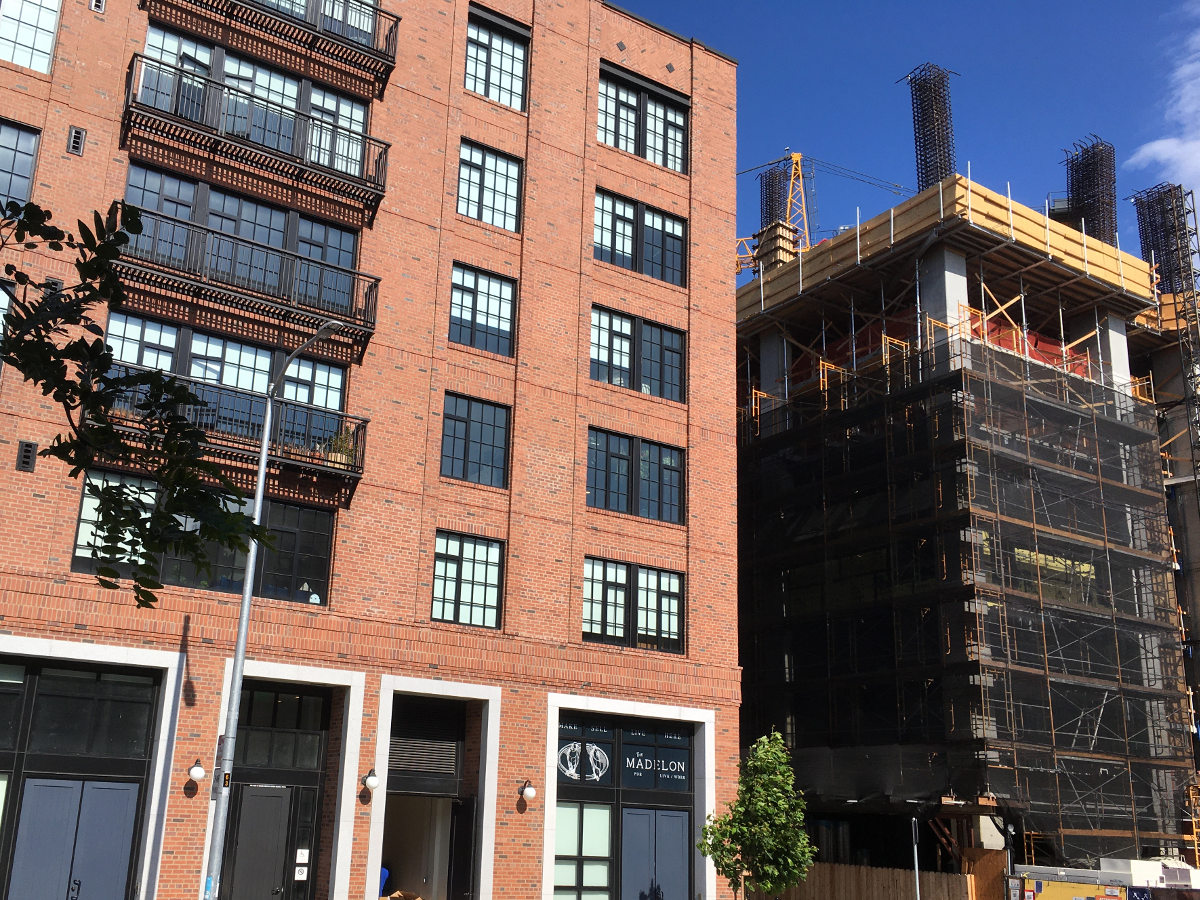Two discourses on housing
July 19, 2021

When we talk about housing and housing development, we have two incomplete conversations that need to be synthesized.
One asks: how many units, how tall, which neighborhoods are getting it, how much parking? The goal is to build more housing in already built-up areas, especially where it’s walkable, and in affluent and high-opportunity neighborhoods. Along the way, it’s necessary to challenge ideas that apartment buildings can’t mix with houses, that all new residents will inevitably drive cars, or that low-rise streets must necessarily stay low-rise. I’ll call this the density discourse. Activists who focus on these questions may identify as urbanists, YIMBYs, or market urbanists.
And the other conversation asks: who owns it, how is its development funded, who gets to live there, what rights do residents have? Working people should be able to afford the housing, especially if it’s in a gentrifying neighborhood, and should have peace of mind they won’t face big rent hikes, evictions or foreclosures just so an owner/lender can make more profit. Let’s call this the ownership discourse. If you focus on these aspects, you might call yourself a progressive, tenant organizer, anti-gentrification activist, PHIMBY (public housing in my backyard), or democratic socialist.
Both sets of questions matter, and there’s vital work to be done making change with regard to each.
It’s fine to be more passionate about one discourse than the other, but you can’t completely ignore either one and come up with a coherent vision. It’s too simplistic to say a city that builds dense, tall buildings all over will be an affordable utopia—who are the buildings for, and what is their experience like, living in them? Did the people who were there before that new construction get to stay and keep their culture, particularly if they were non-rich and non-landowning? Can market mechanisms even build as many dense, tall buildings as you want, considering that banks may not finance housing development in your city if dropping prices make it less profitable than other investments?
Conversely, if your city moves increasingly toward an emphasis on community-led development of decommodified, social housing, this could be wonderful or terrible. Did the city build 10,000 social housing units last year, or 100? Is land being used well, or are large, developable lots near transit hubs—scarce by definition—being squandered on low-rise and townhomes? Is the construction all over the city, or only where renters already live, while keeping a separate set of majority-homeowner neighborhoods untouched by the social housing program?
For my first couple years in local politics, I was deep in the density discourse. Every day brought new examples of snobbish or sentimental attitudes in opposition to new, taller buildings; these were the neighborhood preservationist or NIMBY types, the villains of density discourse. I zeroed in on this foe. It was all I could think about, that for climate, for affordability, for inclusivity, we had to move past the silly cries of, “Too tall! A four-story high-rise is out of scale for this neighborhood” and so on: attitudes which, when given credence by politicians and the planning system, presented barriers to the abundance of housing we needed.
I got in unproductive arguments with people who were thinking about the ownership discourse. Of course, there were self-styled progressives who paid lip service to the questions of ownership discourse when they really just didn’t want housing, but I got in arguments with well-meaning people, too. They were simply seeing other parts of the housing problem than I was.
Only over time did I see the gaps in my thinking. There was no single cause of this insight. Partly it was getting excited about new infill when a project was only an address and a rendering, and then feeling deflated when it opened and I saw the eye-popping prices, obnoxious marketing and, often, the scumminess of the property management company. Partly it was learning about Henry George’s ideas—questioning the legitimacy of land value windfalls. It was watching how developers of megaprojects would deliberately build slowly, to avoid competing with themselves too much. And finally, there were productive conversations: getting beers with people I’d argued with online, gradually making friends.
In the end, I wasn’t wrong to think the density discourse mattered, only to think it was all that mattered. And now that I have a broader view, I see how the density discourse can be abused, just as the ownership discourse can. A politician can say “yes in my backyard” and champion fourplexes, while simultaneously trying to strangle a proposed rent control law or defund a social housing pilot. In other words, they can further the interests of landlords and the for-profit real estate industry—the antagonists of the ownership discourse—and if you only think in terms of the density discourse, as I once did, you won’t realize that your goal of inclusive cities is slipping away.
Because each of the two discourses represents only half of a complete vision, well-meaning people tend to talk past one another. Worse, we may not be equipped to see how bad actors can sneak into our ranks—on both “sides” of this divide.
But there is no inherent conflict. Shifting from sprawl to human-scale infill development goes hand-in-hand with treating housing as a human right and empowering landless and disinvested-in communities. Housing can be abundant, affordable, sustainable, and just. The first step is to put the density discourse and the ownership discourse together.
